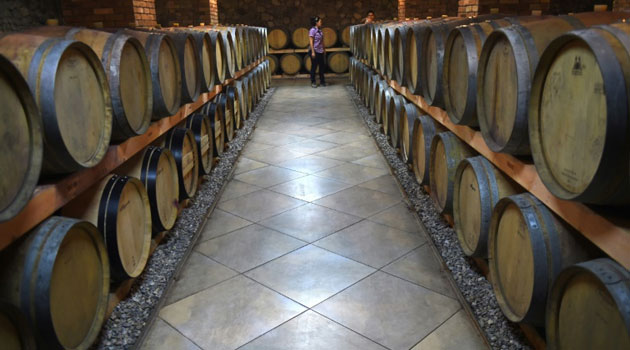HELANSHAN, China, Dec 15 – In a country renowned for forgery, winemaker Jose Hernandez worries China’s burgeoning viniculture industry will suffer from blatant copying of Bordeaux’s output.
China has the world’s second-largest grape growing area, but experts say its winemakers need to innovate rather than imitate established European or New World regions if they are ever to join their ranks.
When Hernandez, a Chilean, walked into a winery in Ningxia, he found an unappetising blend: brand new Chinese equipment and old French ideas about winemaking.
Hernandez was among more than 50 foreign winemakers brought to the northern region by a government-sponsored competition that pairs each with a local winery, in an attempt to drive up quality and earn a global reputation.
“The wines have potential, you see they have something special, but right now most wineries are just copying Bordeaux styles, it’s the same mistake all the South American countries made 20 to 30 years ago,” said Hernandez, who has made wine in Argentina and Spain as well as his home country.
Instead they needed to showcase their own terroir, he said. “They need to offer something unique from that place.”
Walking among sun-kissed vines, most of the winemakers were initially impressed by the grapes. But good, albeit not spectacular, fruit is not enough to make a great wine.
Ningxia has only a limited history of viniculture, and most of the vineyard workers have never tasted their produce: the region is the homeland of China’s Hui Muslim minority, who adhere to the Islamic prohibition on alcohol.
But it hosts some impressive wineries, owned by members of China’s Han majority, complete with the latest technology, imported oak barrels and slick tasting rooms.
The biggest problem, Hernandez said, was an idea that money and investment can make great wine.
“For the wineries in Ningxia, in their mind, making wine is more or less the same as making cars: grapes go in, wine comes out,” he said.
Currently most Ningxia vines are cabernet, and wineries are trying to make high-alcohol, heavily oaked products.
But the foreign winemakers in the competition overwhelmingly singled out marselan grapes — a cross between cabernet sauvignon and grenache that produces fresher, fruitier wine — as better suited to the area.
Developing its “own style will be important as the region is very different to Bordeaux or any other wine region in the world”, said Carsten Migliarina, a South African who worked in France and now makes his own eponymous brand in Stellenbosch.
“Selecting the right grape varieties will take time.”
– Number Two –
China’s first commercial winery opened in 1892, and the country’s 799,000 hectares (1.97 million acres) devoted to wine grapes are second only to Spain, according to the International Organisation of Vine and Wine (OIV).
But vineyards have only become serious in the past 15 years.
Ningxia wines have fared well in some blind tastings: When Bordeaux faced China in a 2011 competition in Beijing the top bottle came from Ningxia.
But the format had a flaw: The contest was limited to bottles priced between 200 and 400 yuan ($30-$60) in China, putting the French products at a disadvantage because of Beijing’s punishing 48 percent import duty.
A sweeping corruption crackdown since Chinese President Xi Jinping came to power more than two years ago has seen demand slip for luxury goods — including premium foreign wines — as it cast a chill over the widespread gifting of expensive alcohol and other items to officials.
Government officials in Ningxia predict that it could spur sales of domestic brands as an alternative.
“Those bottles that cost tens of thousands yuan have been seriously impacted by the anti-corruption rules,” said Cao Kailiang, deputy director of the forestry bureau, which oversees the vineyards.
“Ningxia wines cost only several hundred yuan, it’s not a luxury gift, it’s for ordinary people to enjoy.”
Liquor giants Pernod-Ricard and Moet-Hennessey both own wineries in the region.
But while China produced 1.1 billion litres of wine last year, according to the OIV — in eighth place globally, well behind France’s 4.4 billion litres — most Chinese do not drink it, instead preferring beer or baijiu, a fiery white spirit that can be up to 72 percent alcohol.
Among those who do, Chinese customers almost always prefer an imported bottle, according to Mariano Larrain Hurtado, a wine consultant who owns a shop in Beijing, while foreigners are more interested in sampling Chinese wines.
“The problem with Chinese wine is not the taste, it’s the price, for the moment the prices don’t match the quality,” he said.
Bringing them into line may prove difficult in Ningxia, where the vines must be buried every winter to protect them from the cold, a labour-intensive process that drives up costs.
“Great Chinese wines are still five to 10 years away.”










































